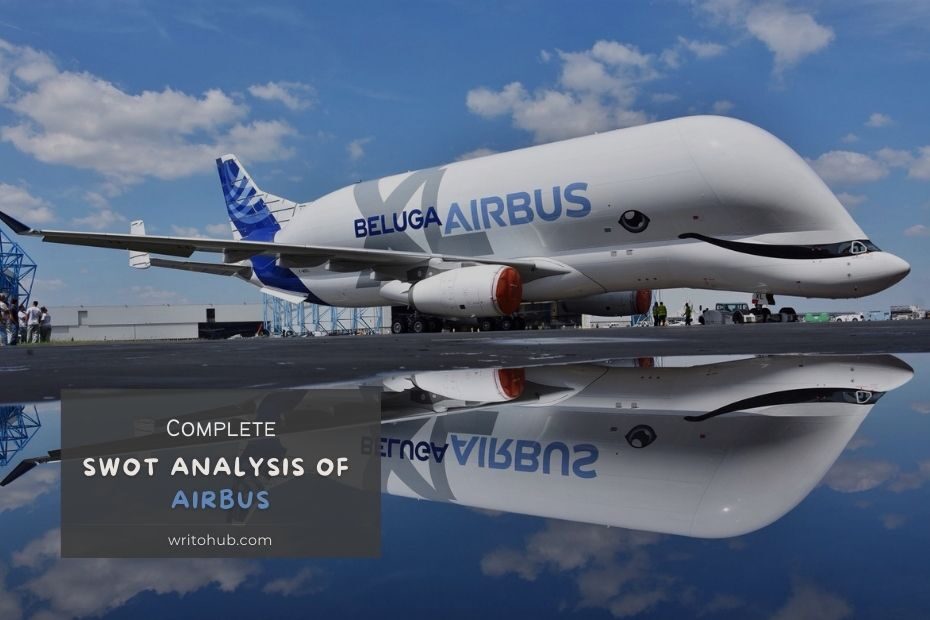The SWOT Analysis of Airbus tells the SWOT (Strengths, Weaknesses, Opportunities, and Threats) of the leading European aerospace corporation – Airbus!
Airbus operates in the dynamic and competitive aerospace industry.
A SWOT analysis of Airbus reveals its strengths, weaknesses, opportunities, and threats, providing insights into its strategic position in the market.
Strengths in the SWOT Analysis of Airbus
- Global Market Leader: Airbus is one of the world’s largest aircraft manufacturers, with a significant share of the global commercial aerospace market.
- Wide Product Portfolio: The company offers a diverse range of commercial, military, and space-related aircraft and products, catering to various customer needs.
- Innovation and Technology: Airbus is at the forefront of aerospace technology, pioneering advancements in fuel efficiency, safety, and passenger comfort.
- Global Presence: Airbus has a global footprint with manufacturing and assembly facilities in multiple countries, enhancing its reach and operational efficiency.
- Strong Industry Alliances: The company collaborates with a network of suppliers, airlines, and research institutions, fostering innovation and growth.
Weaknesses in the SWOT Analysis of Airbus
- Production Challenges: Airbus has faced production challenges, including delays and supply chain disruptions, impacting delivery timelines.
- High Development Costs: Developing new aircraft and technologies requires substantial investment, leading to financial pressures.
- Dependence on Large Customers: The company has a significant dependence on a few large customers, making it vulnerable to their financial health and decisions.
- Political Influence: Airbus operates in a politically sensitive industry, subject to international trade disputes and regulatory changes.
- Environmental Concerns: The aerospace industry faces increasing scrutiny regarding its environmental impact, potentially leading to stricter regulations.
Opportunities in the SWOT Analysis of Airbus
- Demand for Fuel-Efficient Aircraft: Rising fuel prices and environmental concerns drive demand for fuel-efficient and eco-friendly aircraft.
- Emerging Markets: Exploring emerging markets, especially in Asia and Africa, can tap into the growing demand for air travel.
- Space Exploration: Airbus can expand its presence in the space industry, including satellite manufacturing and space exploration technologies.
- Military Contracts: Securing military contracts for defense and security-related products can diversify revenue sources.
- Digital Transformation: Leveraging digital technologies for aircraft design, manufacturing, and maintenance can enhance efficiency.
Threats in the SWOT Analysis of Airbus
- Intense Competition: Airbus faces fierce competition from Boeing, regional manufacturers, and emerging aerospace companies.
- Economic Downturn: Economic recessions or downturns can lead to reduced air travel demand and orders for new aircraft.
- Trade Disputes: International trade disputes and tariffs can impact Airbus’s global supply chain and operations.
- Technological Disruption: Rapid technological advancements can disrupt traditional aerospace business models.
- Geopolitical Tensions: Political and geopolitical tensions can impact international business operations and trade.
Conclusion
Airbus’s SWOT analysis underscores its position as a global leader in the aerospace industry.
To maintain and enhance its market presence, Airbus must continue to innovate, address production challenges, seize growth opportunities, and navigate geopolitical and environmental challenges in this highly competitive and dynamic industry.
